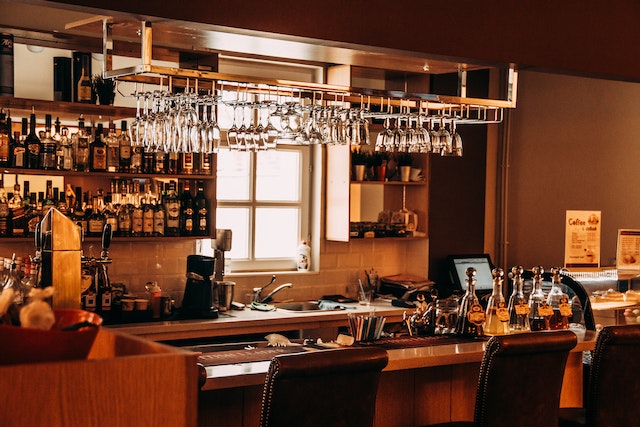
It’s no secret that running a restaurant can be a stressful endeavor. You’re dealing with an endless inventory list, managing employees, and trying to keep everything up-to-code. And when things go wrong in the kitchen, they go very wrong. So it’s important to have the right equipment and supplies on hand at all times, especially if you want to maintain quality control (and avoid costly mistakes). Here are some of the items we recommend every restaurant has in its arsenal:
Dehydrator Machine
A dehydrator machine like this commercial dehydrator machine is used to remove water from foods by evaporation. Dehydrators are used to preserve food and make jerky, dried fruit, and fruit rollups. You can purchase dehydrators at your local grocery store, hardware store, or online.
For example, a sausage maker uses specialized equipment for drying sausages—such as the sausage stuffer—that you would not find in regular kitchens.
Ovens
In order to cook the perfect meal, you need the right equipment. This includes ovens and cooking equipment that can handle a wide range of tasks look at commercial cooking equipment in Brisbane.
How much do you know about commercial ovens? Well, we’re here to help! We’ve put together this handy list of information to ensure that your kitchen is fully equipped with everything it needs.
There are many different types of ovens on the market today; each one has its own unique benefits and drawbacks, which will impact how well they work in your restaurant. For example:
o Convection ovens: These types offer preheating time reductions due to their temperature control mechanisms, but have limited capacity compared with traditional gas or electric models because they lack insulation (i.e., heat storage) features;
o Microwave Ovens – Unlike conventional ovens which heat food by air convection currents in an enclosed chamber at relatively low temperatures (around 300 degrees F/150 degrees C), microwave energy passes through food quickly enough for molecules in food stuffs such as proteins (meat) or carbohydrates (potatoes).
Waste Container
A waste container is a waste disposal container. It’s a container that holds waste. A waste container is great for holding discarded materials, and it’s often used in restaurants as a convenient way to collect trash and recyclables. Here are tips for using waste containers:
- Choose your bin size wisely. Make sure that you have enough waste containers for the amount of food waste generated by your kitchen, but don’t go overboard—you don’t want to order more than you can use.
- Ordering bins from a rental company like this bin hire in South Melbourne is simple and convenient, but if you’re looking to save money, try searching online for “restaurant waste containers” as well as local companies that specialize in renting out bins and other equipment. You might be able to find a deal on shipping costs if you buy more than one item at once!
- Cleaning out waste containers is an important part of maintaining good hygiene standards at any restaurant; however most people don’t know how often these bins should be emptied (or even how).
- The disposal methods available for different types of waste depend on where you live—if possible we recommend using compostable materials whenever possible because they breakdown naturally over time without contributing pollution into our air or water systems when properly disposed off properly disposed off properly disposed off.
Thermapen
The Thermapen is the best meat cooking thermometer you will ever need. It’s fast, accurate, and easy to use. The Thermapen can be used for all sorts of foods—from your steak to your chicken breast, and even the hamburger patties on your menu look at thermapen in Australia.
You’ll never have to worry about overcooking or undercooking anything again with this tool by your side!
Refrigeration
Refrigeration is a must-have for every restaurant. It’s used to store food and beverages, as well as other supplies such as cleaning products and toilet paper. Refrigeration equipment can be divided into three different categories: walk-in refrigerators, reach-in refrigerators, and under-counter refrigerators.
Walk-in refrigerators are large enough to fit several people inside them at once; they’re ideal for storing large quantities of food at once or keeping items at the perfect temperature (about 38 degrees Fahrenheit) for longer periods. They generally have more doors than other types of refrigeration systems, so chefs can easily enter and exit them without having to shut down their cooling systems if they need something from inside the unit quickly (e.g., an ingredient). However, these types of units tend to be more expensive than other options since they take up more space along with being somewhat harder to maintain due to their size – thus requiring extra attention when cleaning around them as well!
Tabletop
A tabletop is the flat surface of a table, and it’s used for serving food and drinks. It should be sturdy and easy to clean, as well as able to withstand heat from hot foods and cold temperatures.
Tabletops can be made of many different materials, including wood, glass, plastic, or metal. Wood tends to be more sturdy than glass or plastic but may stain easily; however, it won’t break like glass will if accidentally dropped on the floor (which has happened more than once in my restaurant experience). Plastic is lightweight and easy to clean but does not normally hold up well under heavy use—it’s better for things like takeout containers than for tabletops in dining areas where you’ll be setting plates down daily during service hours! Metal tables are extremely durable since they’re usually made from stainless steel; however, they aren’t great at absorbing heat or preventing condensation buildup when placed directly against walls near open windows (consider this before choosing one).
Storage
Storage is another important area to consider. Your kitchen should have plenty of storage options so that you can keep it organized and use less food. The right amount of space will allow you to store ingredients properly and also help keep the restaurant clean and free of clutter.
These are some specific areas for consideration:
- Refrigerators – Keeping food at the right temperature is crucial for ensuring safety, as well as preventing waste and spoilage. It’s important to choose a refrigerator that suits your needs appropriately. For example, if you’re serving hot items like soup regularly then cooling them down quickly before serving will be essential; but if most of your dishes are cold then size may be more important than speed when it comes time for selection!
- Freezers – Freezers are great when trying out new recipes because they allow chefs more flexibility in experimenting with different ingredients; however it’s also easy for these units to get cluttered over time with random leftovers or forgotten containers full of frozen foods (which may still contain harmful bacteria even after thawing). Make sure there’s ample space available within each unit so nothing gets lost amongst other things inside them.”
Serveware
Serveware: The right serveware can make the difference between a good meal and a great one. And if you’re using your tableware, it might also help your guests realize that you care about them. Like every other item on this list, there’s an enormous variety of different types of serveware available to restaurants these days—you can get everything from simple bowls and plates to more specialized items like shot glasses or champagne flutes.
The main things you should look for in serveware are durability and size. You don’t want your guests’ wine glasses shattering into pieces before they’ve even had a chance to sip out of them! Durable materials like glass and porcelain will be less prone to breakage than cheaper plastics or metals; this is especially true if you plan on serving hot foods like soup or stew in them.
As for size, this depends on what kind of restaurant you have: If your business focuses primarily on takeout orders placed over the phone (like Domino’s Pizza), then smaller dishes may work just fine — but if most people eat at their tables while waiting for their meals (like Olive Garden), larger plates may be required so they won’t feel cramped while trying not to spill any food all over themselves while eating with one hand too full up holding onto their fork/spoon/knife set combo utensil holder thingy with another hand busy reaching across the table towards their server standing next door……
Having the right equipment and supplies for your restaurant can help you run your business more smoothly
Having the right equipment and supplies for your restaurant can help you run your business more smoothly. This includes:
- A commercial dishwasher. It’s important to be able to quickly and effectively wash dishes in bulk, especially if you’re preparing for large parties or events.
- A commercial ice machine. If you want to serve quality drinks, having an ice maker is essential so that customers have access to chilled water at all times.
- A food processor or blender, depending on what types of recipes call for one or the other item (if either). Cooking specialties like sauces and soups require a food processor; smoothies are best made with a blender because they need to be blended thoroughly for them not only taste delicious but also look great in photos!
Conclusion
It’s important to remember that the equipment and supplies you need for your restaurant will vary depending on what kind of food you serve. For example, if you serve sushi, then it would be helpful to have a rice steamer or rice cooker. Since there are so many different kinds of restaurants out there these days, we hope that this list gives you some ideas about what supplies might work best for your business!
Interesting Related Article: “How to Properly Store Food Supplies in Your Restaurant“









